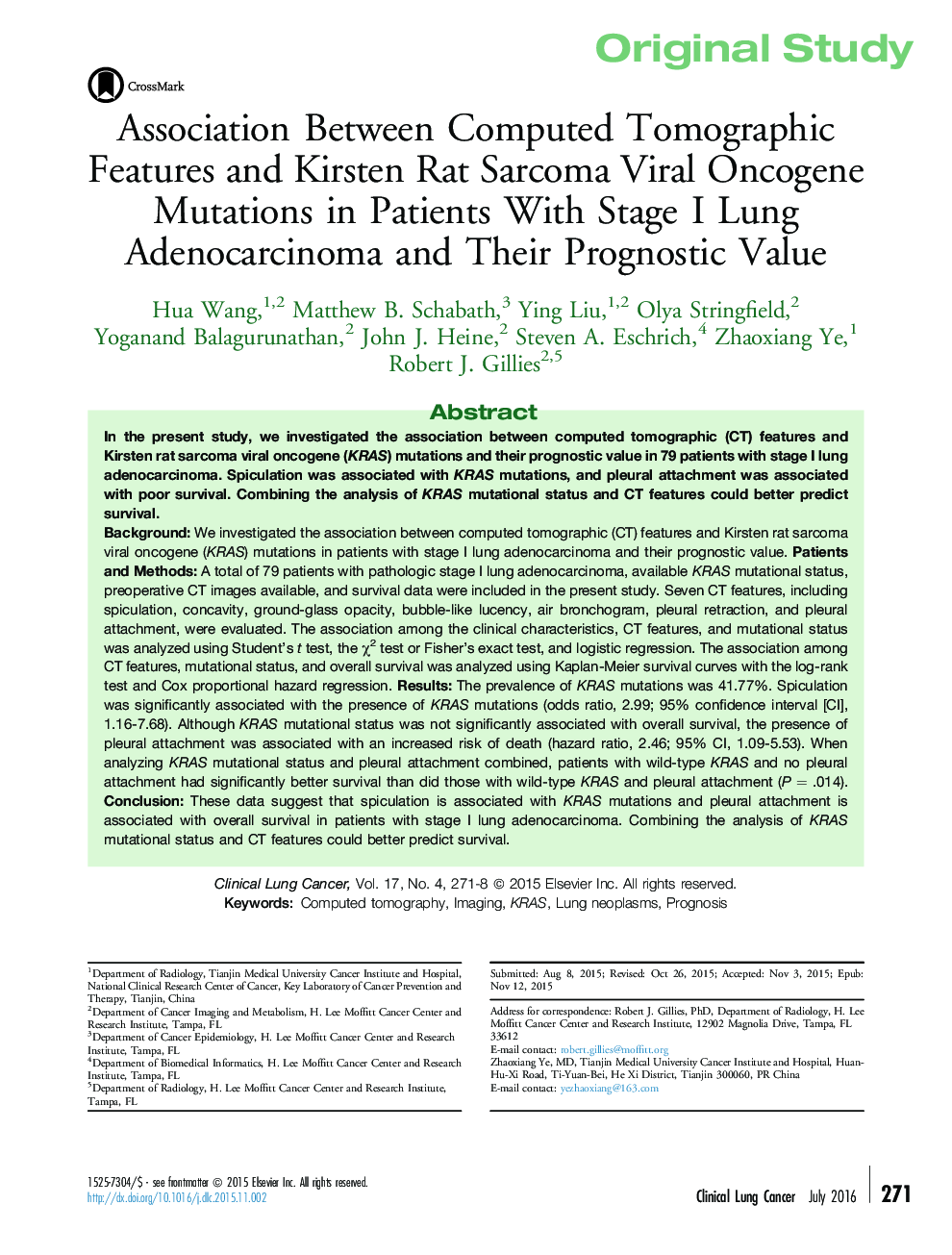| کد مقاله | کد نشریه | سال انتشار | مقاله انگلیسی | نسخه تمام متن |
|---|---|---|---|---|
| 2752665 | 1404206 | 2016 | 8 صفحه PDF | دانلود رایگان |
BackgroundWe investigated the association between computed tomographic (CT) features and Kirsten rat sarcoma viral oncogene (KRAS) mutations in patients with stage I lung adenocarcinoma and their prognostic value.Patients and MethodsA total of 79 patients with pathologic stage I lung adenocarcinoma, available KRAS mutational status, preoperative CT images available, and survival data were included in the present study. Seven CT features, including spiculation, concavity, ground-glass opacity, bubble-like lucency, air bronchogram, pleural retraction, and pleural attachment, were evaluated. The association among the clinical characteristics, CT features, and mutational status was analyzed using Student's t test, the χ2 test or Fisher's exact test, and logistic regression. The association among CT features, mutational status, and overall survival was analyzed using Kaplan-Meier survival curves with the log-rank test and Cox proportional hazard regression.ResultsThe prevalence of KRAS mutations was 41.77%. Spiculation was significantly associated with the presence of KRAS mutations (odds ratio, 2.99; 95% confidence interval [CI], 1.16-7.68). Although KRAS mutational status was not significantly associated with overall survival, the presence of pleural attachment was associated with an increased risk of death (hazard ratio, 2.46; 95% CI, 1.09-5.53). When analyzing KRAS mutational status and pleural attachment combined, patients with wild-type KRAS and no pleural attachment had significantly better survival than did those with wild-type KRAS and pleural attachment (P = .014).ConclusionThese data suggest that spiculation is associated with KRAS mutations and pleural attachment is associated with overall survival in patients with stage I lung adenocarcinoma. Combining the analysis of KRAS mutational status and CT features could better predict survival.
Journal: Clinical Lung Cancer - Volume 17, Issue 4, July 2016, Pages 271–278
